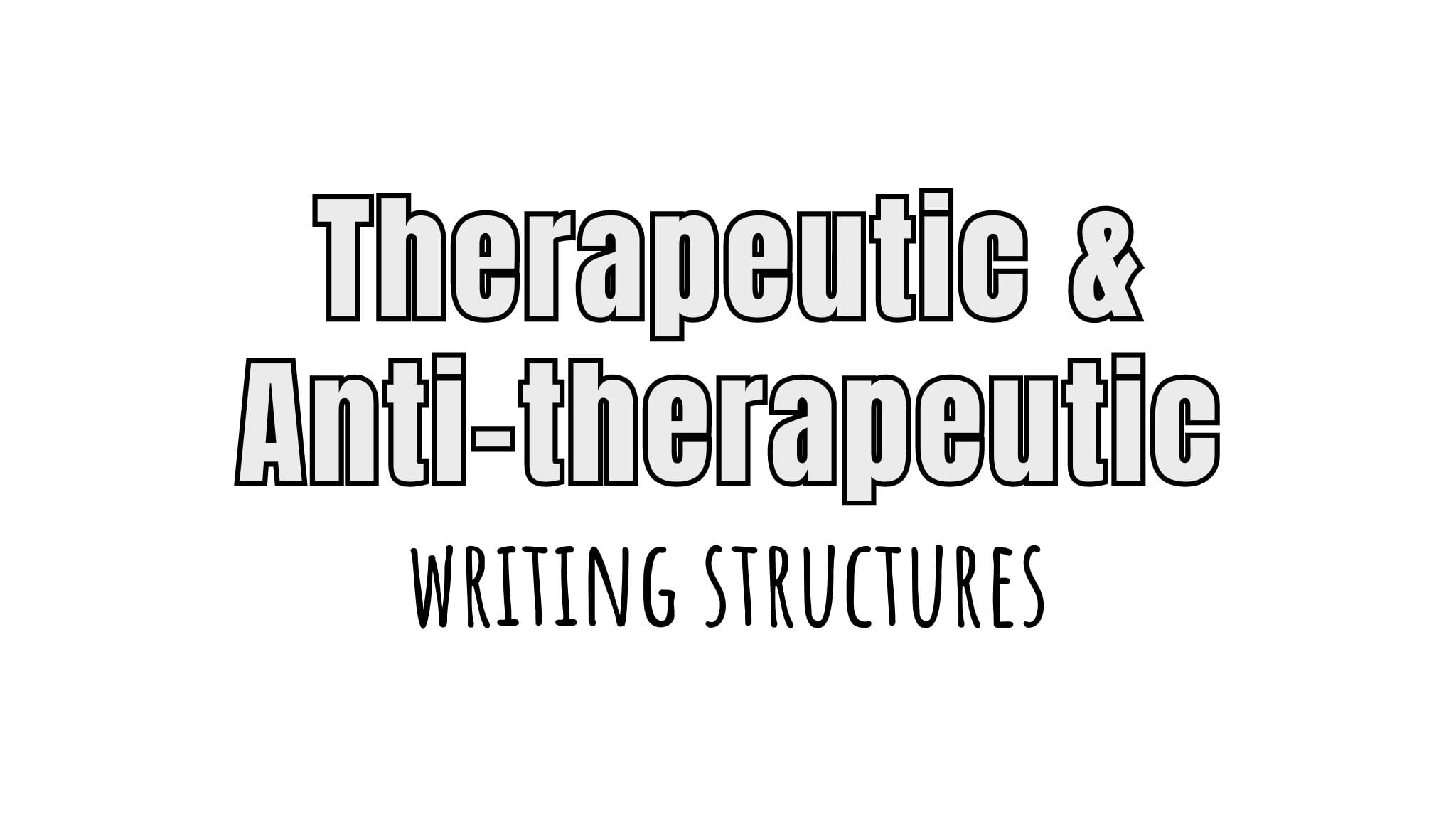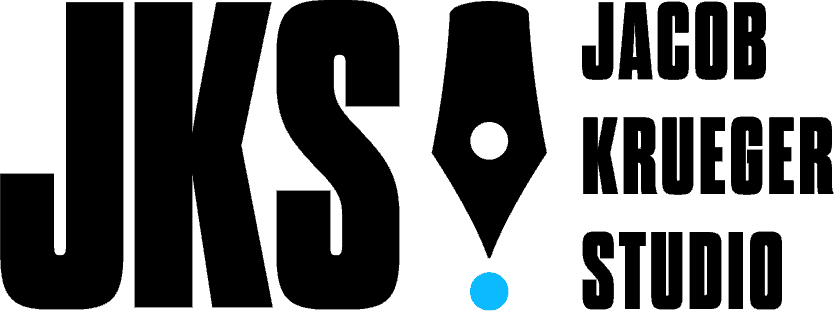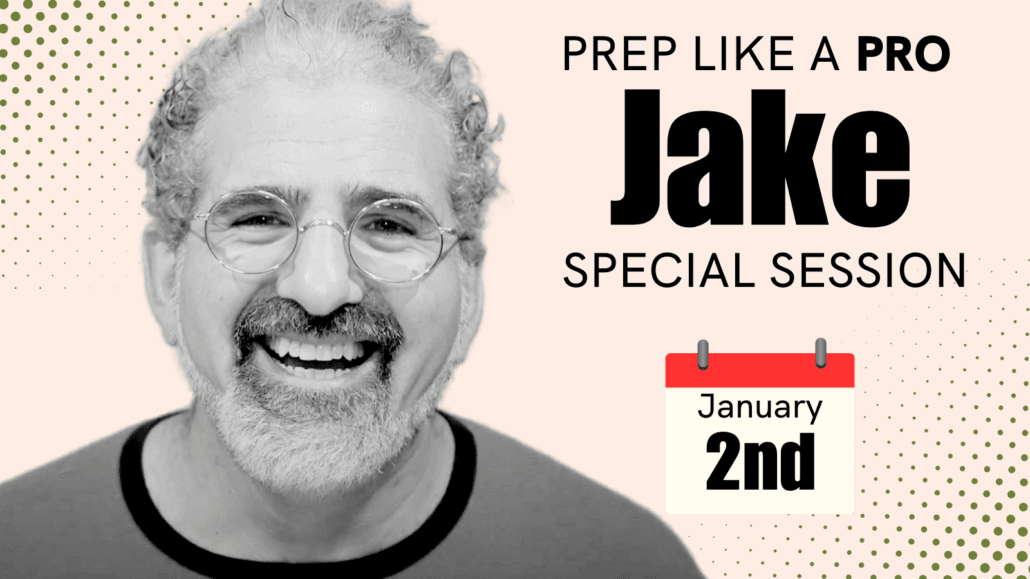This episode, we’re gonna be talking about Shrinking by Brett Goldstein, Bill Lawrence and Jason Segel. In Part 1 of this podcast, we’re going to be exploring the links between therapy and writing, the challenges of writing therapists as characters, as well as some helpful craft techniques from Shrinking that you can apply to your dialogue when writing challenging scenes. Then, in Part 2, we’re going to do a deep analysis of a scene from Shrinking that will teach you how to explode cliché in your own writing.
Shrinking was created and written by some of the same writers who brought us Ted Lasso, and if you’ve watched Shrinking, you know that there’s a very familiar feeling Shrinking shares with Ted Lasso.
Recently, in my Thursday Night Writes class, I spoke about how there are shows that are therapeutic, and there are shows that are anti-therapeutic.
When I speak about a therapeutic show, what I’m really talking about is a show that is built around the healing of the main characters.
Shrinking and Ted Lasso are both therapeutic shows in their structure: shows that are built around journeys of healing for the main characters.
In Ted Lasso, we meet a good man entering a complicated world. We watch him heal all the people around him in Season 1, and then in Season 2, we watch him deal with his own healing. That’s why it’s a therapeutic show: the character’s journey is a therapeutic journey.
In watching a therapeutic journey, the value for us as an audience is that we get to feel some of that therapeutic journey ourselves. We get to think hmm, maybe I could become a better person, maybe I could deal with my demons, maybe I could grow…
Meanwhile, an anti-therapeutic show is a show that breaks the main characters.
It may take a well-adjusted character and break them, or it may take a maladjusted character and break them even worse.
For example, Succession is an anti-therapeutic show: It is a show in which the characters do not transcend, but instead are swallowed by their experiences.

Believe it or not, an anti-therapeutic show like Succession or Bojack Horseman actually has the same effect on audiences as a therapeutic show like Shrinking or Ted Lasso. It creates what the ancient Greeks called catharsis: this feeling of not being alone in the world.
Anti-therapeutic shows can lessen our own pain by recognizing that other people have gone through similar pains to the ones that we’ve gone through.
So, most shows and movies are therapeutic for the audience, regardless of what happens to the characters.
Some shows are also therapeutic for the characters, while some are anti-therapeutic, and some are a mixture of the two.
Black Swan, for example, is both therapeutic and anti-therapeutic for the character.
We have a character who has a repressed dark side, and she takes the therapeutic action of integrating her dark side into herself. She can only dance the white swan, and in the movie she learns to dance the black swan.
But it’s also anti-therapeutic in that the black swan in her ends up basically eating her.
So, she reaches this moment that’s— like in all Darren Aronofsky movies– a transcendent suicide– where she both kills herself and says the word “perfect.”
She has both a therapeutic and anti-therapeutic journey at the same time. And the audience finds catharsis.
Shrinking, of course, is literally a therapeutic show in that the characters are therapists.
Harrison Ford’s character, Paul, Jason Segel’s character, Jimmy, and Jessica Williams’s character, Gaby, are all therapists. And the show focuses mostly on the three therapists, Jimmy’s daughter Alice, and some of Jimmy’s patients– that is the cast of this show.
Writing a therapeutic show is hard. In some ways, writing a therapeutic show is harder than writing an anti-therapeutic one.
If you listen to my podcast about Ted Lasso, for example, you’ll see that the challenge of writing a therapeutic show is that, as people get better, how do you keep the conflict going? How do you keep the pressure growing?
In Ted Lasso, we start with these beautiful, beautifully messed up characters, like the soccer team owner who wants to destroy her own team just to get back at her husband. And we watch what happens when one person with different values comes into a messed up world.
But as they start to change, it actually becomes harder to sustain the show, because the original engine starts to change. So it’s a challenge to write a therapeutic show, because as our characters heal, there’s less drama.
Just like in our own lives. As we heal, there is less drama. Whereas messing up your characters only creates more and more and more drama.

Writing a show about therapists like Shrinking is about as hard of a task as you can take on as a screenwriter.
Therapy scenes are uniquely difficult to write. And the reason that they’re uniquely difficult to write is that the wants tend to drop out.
If the therapist in your screenplay is a “good” therapist, if they actually do what a therapist is supposed to do, their job is to set their needs aside in the scene. The therapists’ need don’t matter. The only needs that matter are the needs of the client.
The therapists goal is to help, to understand, to listen, and the client’s goal is to share, be heard, and get better… which means that good therapy is a real challenge for easily-built conflict.
To make matters worse, what real therapists mostly do is ask questions and sound things back. The less of themselves that they’re putting into the scene, the better your therapy is going to work.
So a good therapist is going to ask you a lot of questions and say back the things they’re hearing in what you said. And that is the antithesis of drama, which is why these therapy scenes are so darn hard to write.
The simple answer to writing therapy scenes that we see in most shows and movies is to let the therapist act more like a character and less like a therapist… and to some degree that’s what Shrinking does with Jimmy, the therapist played by Jason Segel.
The answer most screenwriters find to the problem of writing therapy scenes is to let the therapist not be a very good therapist, because that’s going to keep your main character messed up, and it’s going to keep your therapy scenes active.
…there are going to be a couple spoilers ahead, but nothing that you won’t quickly realize if you’ve watched the pilot of Shrinking,,.
At the center of Shrinking is Jason Segel’s character: a therapist who was madly tragically in love with his deceased wife.
His wife has died when we meet him in the pilot episode, and he is messing up in every possible way, because he is not able to deal with her death.
When we meet Jimmy in the Shrinking pilot, he is using a tremendous number of drugs. He is completely failing to raise his daughter– he’s basically just given up on that, and he’s letting her deal with all this stuff alone– and he’s escaping into sex and addiction to try to deal with his pain.
We meet this guy who’s not okay, and then it’s an ironic surprise (and a shock) when we realize that he’s actually a therapist. (We think, if anything, he’s the guy who really needs therapy).
But then Jimmy makes a choice.
For the structure of Shrinking to work, Jimmy can’t just be a normal therapist with a bunch of personal problems; he has to make a choice that is different.
That unexpected choice is part of the hook of the Shrinking pilot— just like it’s part of the hook of most pilots and movies— what’s the most ironic, unusual or unexpected choice the character could make in this situation?
Jimmy’s unexpected choice is this: what if I just start getting real with my patients?
What if I get rid of all these lines of what the proper behavior for a therapist is supposed to be?
And what does this choice do? It creates some really amazing drama.
Jimmy’s choice is also what the people who don’t like Shrinking, or who have concerns about the show, go “whoa, whoa, whoa!” about.
And they have a good point. Is this how we want to portray therapy? Is this something that actually should be celebrated?
Even inside of the show, Harrison Ford’s character, Paul, is there to make sure the audience doesn’t think the writers are actually on board with all of Jimmy’s choices! He’s there to constantly remind Jimmy, “what you’re doing is completely wrong therapeutically.”
So we have a simple hook of a therapist who is messing up in his own life, but who’s also making choices that are not traditional therapists’ choices. He’s crossing the ethical lines of what you’re supposed to do as a therapist.
One of the really interesting things about how Shrinking works is that it doesn’t judge Jimmy.
Paul judges Jimmy, but the show does not. The writers do not.
And the show ends up exploring both the beautiful and terrible things that go along with the choices Jimmy has made.
For example, Jimmy tells a client, who’s been stuck in a horrible, abusive relationship for as long as he’s known her, that she has to leave the guy.
…I’m not going to do any spoilers here, but this client goes on a whole journey that shows the beauty and the failures and the hope and the horror and the danger of Jimmy making that choice…
Another of Jimmy’s clients, Sean (played by Luke Tennie) has a problem with anger. And Jimmy takes some radical— not necessarily ethical— approaches to helping him deal with the anger… and then finds out that Sean doesn’t have a place to live.
So Jimmy makes another ironic choice, and takes Sean in as a tenant.
And Paul, of course, spends a lot of time saying to Jimmy, “Hey, dude, that’s not right. That is totally wrong, what you’re doing.”
Not only has Jimmy brought this troubled character into his own house, but he’s brought this troubled character into his daughter’s life.
But again, Shrinking is a therapeutic show, both literally and structurally! So yes, we do get into some of the complications of Jimmy’s choice, but mostly it becomes a healing journey: ironic choices that lead to healing, ethical and unethical choices that lead to healing, the mistakes that we make that lead to healing.

Shrinking explores all the different permutations of what it means when a therapist crosses an ethical line, and starts acting more like… well, a human being.
Shrinking explores what makes that tempting, and what makes it problematic, and actually ends up doing a really interesting job at looking at all that complexity.
And in this way, it might not be a great show about how to be a therapist, but it’s quite a beautiful show about irony and the complications of human foibles.
Of course, it’s not just Jimmy who starts crossing lines and making dubious choices.
For example, Paul is Jimmy’s mentor and almost like a father figure to him, and Paul is constantly disapproving of Jimmy for crossing ethical lines. But by Episode 9, Paul is sleeping with his own doctor, messing up with his own daughter, and making some other major mistakes as well in his relationships…
And Gaby, Jessica Williams’ character, by Episode 9, has become…
…another spoiler here…
…Jimmy’s lover. Gaby calls Jimmy “safe dick,” meaning they’re not going to have a relationship. There’s not an emotional involvement, just sex… right?
But that’s complicated, because she has a relationship with his daughter. And that’s hard. And there are real feelings growing there as well.
Ultimately, Shrinking isn’t really a show about therapists. It’s a show about the complications of being human, and how imperfect, complicated relationships can nevertheless lead to healing.
It’s a show about acceptance and self-acceptance, and at the center of the show is a guy who is constantly messing up as a father. Even as Jimmy does better, even as he heals, even as he pulls his act together, he is still constantly messing up.
But even through Jimmy’s mess-ups, we watch him heal his relationship with his daughter. We watch him earn her trust back, not by being perfect, but by trying and failing and making mistakes.
In Jimmy, and in the characters around him, we are watching the therapeutic journey of a bunch of wonderfully complicated therapists.
This is something to think about in your own writing. It’s important to remember: your show can be therapeutic, your show can be anti-therapeutic, your show can be therapeutic and anti-therapeutic at the same time… but what really matters is what aspects of human nature you want to show. What kinds of mental and emotional trajectories do you want to show in your characters?
Tune in Part 2 for a deep analysis of a pivotal scene from Shrinking. We’re going to turn the discussion from the deep, emotional and spiritual side of screenwriting to the craft side of the job. We’ll learn from Shrinking how to deal with clichés when they come up in your writing, the difference between homage and plagiarism when writing scenes inspired by other movies, and 5 hugely valuable craft techniques you can learn from Shrinking that will help you write better dialogue in your screenplays.
If you’re enjoying this podcast and you’re getting a lot out of it, come study with us. We have master classes for people who want to take their writing to the professional level. We have foundation classes in screenwriting and TV writing for those of you who are building your skills as writers. We have the ProTrack mentorship program that will pair you one on one with a professional writer who will read every single scene you write, every draft you write, every revision that you revise, and mentor you through your entire career– all for the tiniest fraction of what you would pay for grad school.
You can do it all live, online, from the comfort of your own home. So come check it out.



